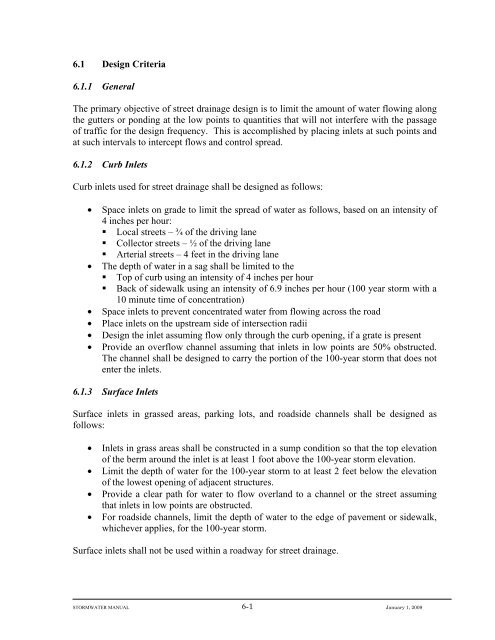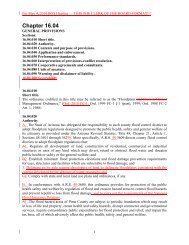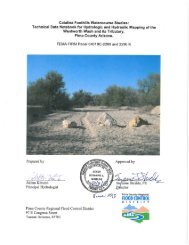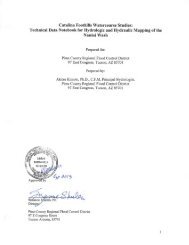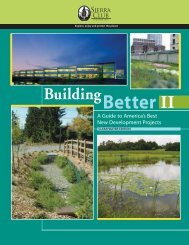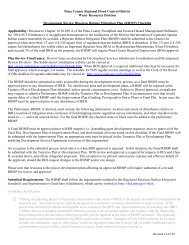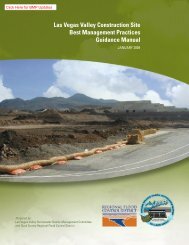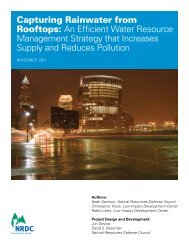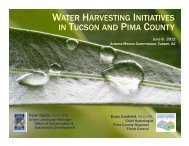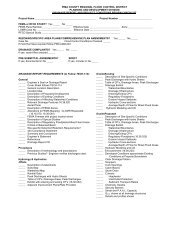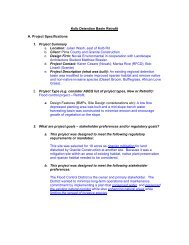Stormwater Manual - Pima County Flood Control District
Stormwater Manual - Pima County Flood Control District
Stormwater Manual - Pima County Flood Control District
Create successful ePaper yourself
Turn your PDF publications into a flip-book with our unique Google optimized e-Paper software.
6.1 Design Criteria<br />
6.1.1 General<br />
The primary objective of street drainage design is to limit the amount of water flowing along<br />
the gutters or ponding at the low points to quantities that will not interfere with the passage<br />
of traffic for the design frequency. This is accomplished by placing inlets at such points and<br />
at such intervals to intercept flows and control spread.<br />
6.1.2 Curb Inlets<br />
Curb inlets used for street drainage shall be designed as follows:<br />
• Space inlets on grade to limit the spread of water as follows, based on an intensity of<br />
4 inches per hour:<br />
• Local streets – ¾ of the driving lane<br />
• Collector streets – ½ of the driving lane<br />
• Arterial streets – 4 feet in the driving lane<br />
• The depth of water in a sag shall be limited to the<br />
• Top of curb using an intensity of 4 inches per hour<br />
• Back of sidewalk using an intensity of 6.9 inches per hour (100 year storm with a<br />
10 minute time of concentration)<br />
• Space inlets to prevent concentrated water from flowing across the road<br />
• Place inlets on the upstream side of intersection radii<br />
• Design the inlet assuming flow only through the curb opening, if a grate is present<br />
• Provide an overflow channel assuming that inlets in low points are 50% obstructed.<br />
The channel shall be designed to carry the portion of the 100-year storm that does not<br />
enter the inlets.<br />
6.1.3 Surface Inlets<br />
Surface inlets in grassed areas, parking lots, and roadside channels shall be designed as<br />
follows:<br />
• Inlets in grass areas shall be constructed in a sump condition so that the top elevation<br />
of the berm around the inlet is at least 1 foot above the 100-year storm elevation.<br />
• Limit the depth of water for the 100-year storm to at least 2 feet below the elevation<br />
of the lowest opening of adjacent structures.<br />
• Provide a clear path for water to flow overland to a channel or the street assuming<br />
that inlets in low points are obstructed.<br />
• For roadside channels, limit the depth of water to the edge of pavement or sidewalk,<br />
whichever applies, for the 100-year storm.<br />
Surface inlets shall not be used within a roadway for street drainage.<br />
STORMWATER MANUAL 6-1 January 1, 2009


